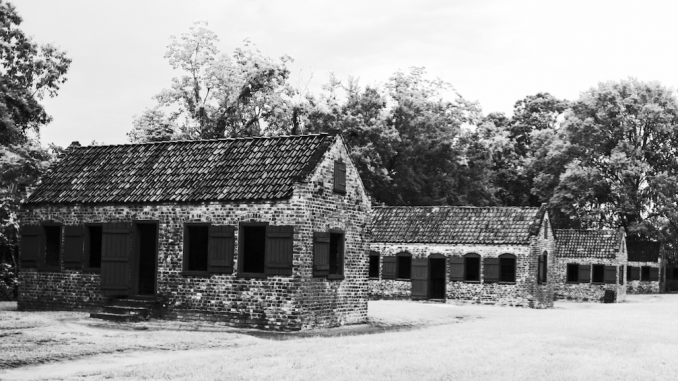
Preservation was a key concept this past weekend for Historic Huguenot Street.
On Saturday, Sept. 10, a reception was held for Joseph McGill and Terry James of the Slave Dwelling Project.
As part of the project, McGill and James spent a night in a cellar kitchen on Huguenot Street in an attempt to bring attention to the conditions slaves lived in during the early stages of New Paltz’s settlement. They were also joined by six SUNY New Paltz students from the Black Studies department as well as descendants of both Huguenot Street slaves and New Paltz founders.
McGill spoke of what it was like to spend the night with both groups of descendants.
“To have both groups represented last night in that space was one of those rare opportunities I thought went well,” he said.
McGill met James as a fellow Civil War reenactor and started the Slave Dwelling Project on May 9, 2010. The goal of the project is to bring attention to slave dwellings with the hopes of preserving them.
“It’s all about making sure these spaces are preserved, interpreted, maintained and sustained so that they can tell the stories of the enslaved ancestors,” McGill said.
He spoke about the imbalance of these stories prior to the Civil War being told: an imbalance he called a “void in preservation.” He also talked about how an emphasis is placed on architecturally significant or “antebellum” buildings, despite the fact that these buildings were constructed by enslaved people. This thought is reflected by Historic Huguenot Street.
“Many people and historic sites prefer to deny or avoid the topic of slavery, but we feel it’s important to confront this reality,” communications and marketing manager Kaitlin Gallucci said.
McGill has stayed in over 100 slave dwellings throughout 17 states, five of which are northern. This was an important note for McGill, who spoke about the misconceptions that slavery was largely a southern problem.
Gallucci also discussed how important it was to demythologize slavery in the north.
“Contrary to popular belief that slavery was practiced exclusively in the south, northern states were also dependent on enslaved African labor,” she said. “In fact, slavery was not legally abolished in New York State until 1827.”
James has stayed in over 40 slave dwellings himself, most of which he has donned slave shackles for.
When asked what differentiated New Paltz from all the other dwellings at which they’ve stayed, McGill responded by claiming that Huguenot Street is “already ahead of the curve” in that it acknowledges its history of owning slaves.
He explained that while many support this acknowledgement, it also tends to draw ire, but that this should not deter any person from denying the past.
